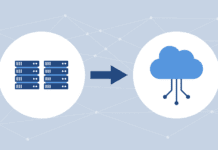As storage managers look ahead to 2020, most analysts are expecting a stronger data storage market than in 2019. Key storage trends that have been shaping the market for several years will continue to grow, while new technologies push prices lower and open up new opportunities for enterprises.
2019 was a mixed bag for the storage market. Year-end figures are not available yet, but IDC reported slight declines in total spending for the first and second quarters of the year, while the third quarter saw a 1.3 percent year-over-year increase in global spending on enterprise external storage systems. Total storage capacity shipments increased every quarter and enterprises’ voracious appetites for data continue unabated.
Some regions of the world, particularly Asia, saw strong growth in enterprise storage, while the US and Europe saw stagnating sales. Economic and political uncertainty caused many IT managers to take a cautious approach to buying in 2019. However, many market researchers believe that could be about to change in 2020.
Storage Spending Forecasts
Analysts expect overall IT spending growth to tick up in 2020, and that will be good news for storage vendors. Gartner is projecting 3.7 percent IT spending growth for next year, up from 0.4 percent in the current year. According to John-David Lovelock, a Gartner research vice president, “The slowdown in IT spending in 2019 is not expected to stretch as far into 2020 despite concerns over a recession and companies cutting back on discretionary IT spending.”
As far as vendors go, look for Dell Technologies to continue its dominance. It captured about a third of the enterprise storage market in 2019, and the other leading vendors have a long way to go to catch up. The more interesting part of the race is the battle for second place, where NetApp and HPE are extremely close.
Forrester believes 2020 will be a key year for data strategy, leading to significant increases in spending on data storage and data management. “Enterprises looking to push more into the cloud and exploit edge computing are also staring at a new reality where the transactional cost of data processing and movement will outstrip storage,” it said in its Predictions 2020 report. “Advanced firms will understand the benefits of getting all of this right and will double or triple their data strategy budget to soar past competitors.”
Automated Data Management
As machine learning and artificial intelligence become increasingly entwined with enterprise applications of all kinds, organizations are also beginning to apply the technologies to data managements. In its Top 10 Data and Analytics Trends for 2020, Gartner noted, “With technical skills in short supply and data growing exponentially, organizations need to automate data management tasks. Vendors are adding machine learning and artificial intelligence (AI) capabilities to make data management processes self-configuring and self-tuning so that highly skilled technical staff can focus on higher-value tasks.”
Similarly, ESG’s Christophe Bertrand wrote, “Intelligent data management or the intelligent reuse of data will become more pervasive in 2020. . . . We believe that the vendors that successfully morph their platforms to include instrumentation and workflows to make the sharing of compliant data easy will start building a lasting differentiation in the market.”
SSDs and Flash Arrays
For 2020 look for the trend toward flash arrays to continue, although the pace of growth might slow as many enterprises have already upgraded the legacy systems where converting to SSDs was most cost effective. According to IDC’s Worldwide Quarterly Enterprise Storage Systems Tracker, in the third quarter of this year, “Strong double-digit annual growth of All Flash Array (AFA) sales was required to offset declines in the Hybrid Flash Array (HFA) and HDD-Only markets.” Look for the trend toward AFAs to continue into 2020.
Part of the reason for that trend is continuing price decreases, due in part to advances in fabrication capabilities. South Korea’s Hynix began production of 128-layer 4D NAND flash this year, and that should put more downward pressure on prices for high-capacity SSDs and flash arrays.
Cloud Storage
Cloud storage remains very important, but the cloud landscape is shifting. Growing public cloud costs and difficulties with cost management are leading some enterprises to move back toward a more hybrid storage model.
In Enterprise Strategy Group’s Data Storage Predictions for 2020, senior analyst Scott Sinclair noted that the majority of enterprises moved at least one workload that was in the public cloud back on premises during 2019. “The long-held perception that eventually all IT will be public cloud-based is starting to fade,” he wrote. “Hybrid cloud infrastructure is the de facto standard of modern IT. And for digital businesses, data is increasing on- and off-premises at similar rates. In other words, on-premises infrastructure will be a significant part of IT for the foreseeable future.”
Sinclair predicted that at least one public cloud storage provider will acquire a hybrid or on-premises data storage company in the coming year. He also said that he expects more IT teams to consolidate the groups managing on-premises and cloud storage and to invest in tools like Kubernetes that make it easier to manage hybrid workloads.
Software-Defined Storage
For the past several years, IT infrastructure has been becoming more software-defined, and that trend certainly isn’t going to disappear anytime soon. Reports suggest the global software-defined storage market could be worth as much as $7 billion in 2020.
Speaking to eWeek, Bruce Milne, VP and CMO of IT service Management company Pivot3, noted that the trends toward hybrid cloud and software-defined storage are intrinsically linked. “As our industry moves forward in 2020, a new category will capture the essence of software-defined everything, and I believe it will be the notion of hybrid cloud,” he said. “Hardware will still be required, but it could be located anywhere; software will continue to coordinate the increasing complexity to the point where location of hardware will increasingly become irrelevant in 2020.”
Hyperconverged Storage
The growth in hybrid cloud and software-defined infrastructure are also leading to higher demand for hyperconverged storage. Vendors like Cisco, Dell and HPE are touting hyperconverged storage as ideal for multi-cloud, hybrid cloud and software-defined storage environments, and to a large extent, enterprises are buying. According to Mordor Intelligence, the hyperconverged infrastructure market is growing at a compound annual growth rate of 13 percent, which should continue through 2024.
The trend toward edge computing is also encouraging adoption of hyperconverged storage. Because they are easier to managed than traditional storage arrays, hyperconverged appliances are very well suited for remote office and retail settings, and enterprises are finding that it is often more cost effective to do some storage and processing at the edge of the network rather than transmitting everything to the public cloud.
Storage Security
Expect spending on storage security, particularly cloud storage security, to continue to climb in 2020. “Today’s complex geopolitical environment has pushed regulatory compliance to the top of organizations’ priority list,” noted Gartner. “Overall spending on security increased 10.5 percent in 2019, with cloud security projected to grow 41.2 percent over the next five years.”
A growing related trend is the demand for trustworthy data. In fact, Gartner included data transparency and traceability in its Top 10 Strategic Technology Trends for 2020. Enterprise leaders and consumers alike are becoming more suspicious of the machine learning algorithms used to analyze data. As a result, data and storage managers are facing an increasing need to prove not only that their data is secure, but also that it is reliable, having been gathered, stored, and processed with integrity and accountability.
New Storage Trends and Technology
Several trends, like data analytics, artificial intelligence, machine learning, blockchain, robotics and the Internet of Things (IoT) are driving a need for ever-greater storage capacities. IDC noted, “A growing share of traditional server/storage spend, for example, is now driven by workloads related to the deployment of these new technologies on the back-end.”
To keep up, enterprises are looking toward new technologies that help them store and process more data, more quickly. Analysts expect technologies like in-memory and persistent memory databases, data fabric and graph databases to become more important in the coming year.
Gartner analyst Rita Sallam advised, “Data and analytics leaders should actively monitor, experiment with or deploy emerging technologies. Don’t just react to trends as they mature.”
By being proactive, IT managers can help transform data storage from an area that is viewed as a cost center into a true competitive advantage for their organizations.





